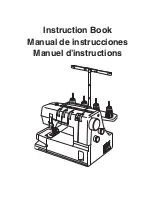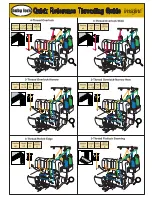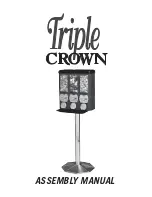
Glossary
249
Appe
ndix
DTMF (Dual Tone Multi-
Frequency)
Dialing method that sends a different set of frequencies for each digit of the telephone
keypad. Commonly refers to touch tone dialing.
ECM (Error Correction
Mode)
The ability to correct transmission errors as detected during the transmitting phone call.
Email Address
The address for sending and receiving data by email. It consists of User name, Sub-domain
name and Domain name.
End Receiving Station
In a relay network, the final station designated to receive the document.
Energy-Saver Mode
Saves energy by consuming less power than when in standby mode by turning off the fuser
unit after the specified time.
Ethernet
A very common method of networking computers and equipment in a LAN.
Ethernet can handle up to 100 Mbps and can be used with almost any kind of computer.
FCC
Federal Communications Commission. The U.S. Government organization that regulates
communications originating or terminating in the United States.
FAX Forward
The ability to forward all incoming faxes to the registered station in the specified ABBR No.
FAX Parameter List
The list that contains the home FAX parameters settings that you have programmed into your
machine.
FAX/TEL Auto Switching
The ability to share a single telephone line for both fax and voice usage.
File
A task that has been stored into the memory of your unit. Examples are deferred
transactions.
Fixed Print Reduction
The method that allows you to determine one reduction rate, such as 75%, for all incoming
documents.
Function
The control panel key that will be utilized to begin an operation or configuration of a feature.
G3 Mode (Group 3)
Refers to the standards and transmission capabilities of the current generation of machines.
Group Dialing
The ability to program many telephone numbers into a single station so that many locations
can be dialed in sequence utilizing a single keystroke.
Halftone
A scanning technique to distinguish levels of gray from black and white. Your machine can
detect up to 64 levels of gray in halftone mode.
Handshaking
The exchange of a group of control signals that communicate between the transmitter and
receiver. These signals determine the condition at which communication can occur.
Header
A row of information that is transmitted by the sending machine and printed on the top of
each page by the receiving unit. This identifies the transmitting unit and information about
the transmission, such as time and date.
Home Page
The page that your Browser displays when it starts up or the main web page for a business,
organization, etc.
Host
Any computer on a network that is a repository for services available to other computers on
the network.
A Host must have a unique Host name within a domain.
The host is the first (left most) section of the Fully Qualified Domain Name (FQDN).
The remainder of the FQDN is the domain and often tells you something about where your
machine is located (i.e., at Panasonic).
Example:
Your machine's email address is: [email protected]
In the example above "fax01" is the host and "panasonic.com" is the domain.
ID
A programmable address of up to 20 digits identifying your machine.
Image Memory Capacity
This signifies the amount of memory available in your unit capable of storing pages of
documents. All page units of measure are based on the ITU-T Image No.1.
Individual Transmission
Journal
A report that is printed by the transmitting unit stating information regarding the last document
transaction.
Industry Canada (DOC)
Department of Communications. The Canadian Government organization that regulates
communications originating or terminating in Canada.
Continued on the next page...
Содержание Panafax DX-800
Страница 69: ...69 memo Installing Your Machine ...








































